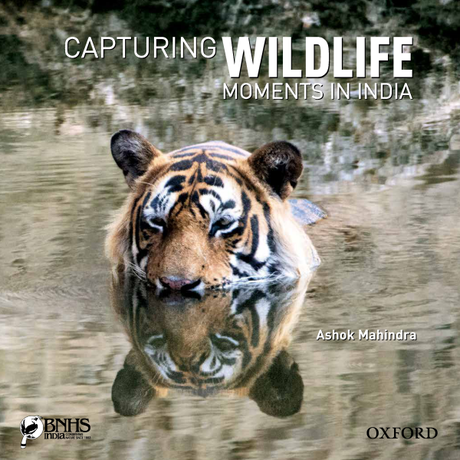One of my favorite outings is a day at the zoo. I've enjoyed visiting some of the best in India and find it thrilling to see the animals, birds, reptiles and aquatic life, often in their natural habitat. Then there are the various species of plants and trees, the stories and legends associated with them.
But my love for our feathered friends and four-legged species is not confined to zoos or national parks. I rejoice just as much when I see crows, mynahs, pigeons, kites, parrots and bats - and rarely, sparrows around our home.
Nature is exquisitely beautiful and relaxing and when I look at the world around me, I am filled with joy. I am thrilled that my son shares the same excitement, often saying that one of his goals is to visit every national park and zoo in the world and also do something significant in terms of preserving wildlife. May his dreams come true!
When Saevus got in touch about a book review of "Capturing Wildlife Moments in India" by Ashok Mahindra of The Hem Chand Mahindra Foundation, and sent me a digital copy, my son and I were eagerly looking forward to it.
Capturing Wildlife Moments In India
by Ashok Mahindra
The book, which is about 150 pages, is not just a visual delight with the author's wonderful photography of a number of endangered species in their natural habitat, with special focus on the Bengal Tiger. It also has valuable information about the animals themselves along with his own perspective where he writes " My endeavour as a photographer is to encourage people to care for all threatened species - from the smallest insects to the biggest cats - before it is too late."
He offers thirteen ways to preserve our precious wildlife more effectively along with information about special concessional packages for school children, who can play a vital role in the conservation of wildlife.
I couldn't help feeling envious about the 30-odd wildlife locations he has visited, including UNESCO Natural World Heritage Sites to photograph the animals featured in this book.
With each photo, there is information linking some of the species with Indian gods and goddesses and reference to legends and a description of unique habits of some of the species. There is a useful note on IUCN classification and the status of species. He lists interesting places to stay, which is a big plus for wildlife photography aficionados along with the chapter on camera and technique used.
Here are some exclusive images from the book:
Seeing photos from the Kazironga National Park, Assam, brought back happy memories - it was one of the places we visited in 1997 and thoroughly enjoyed the experience. I'll never forget the crazy jeep ride into the rhino reserve.
One of the things I liked about the book was the author describing his own experiences in relation to each photograph. For instance, with his photograph of Zalim, the Bengal Tiger at Ranthambore National Park in Rajasthan he shares unique information about Zalim, who raised his two three-month old female cubs after their mother died from an infection. Not something that male Tigers usually do! The chapter on Tiger tales is fascinating, where the author shares the stories narrated to him by the guides who accompanied him.
I was a little surprised to see very few mentions from South India. Still, it is a fabulous book and I can only image the tremendous effort that went into putting it together.
In a world where the ecosystem is losing its balance on a daily basis, it has become critical for us to take action to preserve it, not just for future generations, but for ourselves. I was shocked to learn that the Asiatic Lion, which features majestically on our national emblem, is only to be found in the Gir National Park in Gujarat.
As the author mentions in the "Dedication" at the beginning of the book, "without forests and rain forests, without mangroves, woodlands, wetlands, swampy marshes and mudflats, there will be no species left for the following generations." That's the truth.
The book is a great guide for wildlife tourism in India, with a list of wildlife hotspots for those who are already involved in wildlife conservation and a fantastic coffee table book that will serve as a constant reminder of our duty to our environment. Buy it, gift it, cherish it!
To know more about Ashok Mahindra visit www.wildlifephotographybyakm.com About the book: "Capturing Wildlife Moments in India" contains 120 photographs of animals and birds of India, photographed from visits to over 30 parks,sanctuaries and other locations. It is being published by Oxford University Press(OUP) & Bombay Natural History Society(BNHS).The book will be available at most of the major retail outlets across India and also through online retail sites like Amazon, Flipkart etc.It will also be available for sale through the BNHS website and is priced at Rs.1450″ "This post is a part of the book review program of at Saevus Wildlife India in association with The Hemchand Mahindra Foundation for the book Capturing Wildlife Moments in India"
